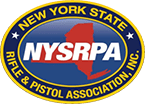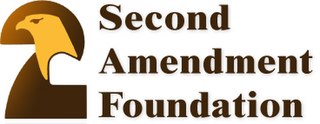
The Second Amendment to the United States Constitution protects the right to keep and bear arms. It was ratified on December 15, 1791, along with nine other articles of the Bill of Rights. In District of Columbia v. Heller (2008), the Supreme Court affirmed for the first time that the right belongs to individuals, for self-defense in the home, while also including, as dicta, that the right is not unlimited and does not preclude the existence of certain long-standing prohibitions such as those forbidding "the possession of firearms by felons and the mentally ill" or restrictions on "the carrying of dangerous and unusual weapons". In McDonald v. City of Chicago (2010) the Supreme Court ruled that state and local governments are limited to the same extent as the federal government from infringing upon this right. New York State Rifle & Pistol Association, Inc. v. Bruen (2022) assured the right to carry weapons in public spaces with reasonable exceptions.
The Sullivan Act was a gun control law in New York state that took effect in 1911. The NY state law requires licenses for New Yorkers to possess firearms small enough to be concealed. Private possession of such firearms without a license was a misdemeanor, and carrying them in public is a felony. The law was the subject of controversy regarding both its selective enforcement and the licensing bribery schemes it enabled. The act was named for its primary legislative sponsor, state senator Timothy Sullivan, a Tammany Hall Democrat.

The New York State Rifle & Pistol Association (NYSRPA) is the U.S. state of New York's largest and oldest firearms advocacy organization. Established in 1871, the NYSRPA is dedicated to the preservation of gun rights, firearm safety and education, and shooting sports. It is associated with the National Rifle Association of America ("NRA") and engages locally in many activities similar to the NRA.

The Second Amendment Foundation (SAF) is a United States nonprofit organization that supports gun rights. Founded in 1974 by Alan Gottlieb and headquartered in Bellevue, Washington, SAF publishes gun rights magazines and public education materials, funds conferences, provides media contacts, and has assumed a central role in sponsoring lawsuits.

The Supreme Court of the United States handed down eight per curiam opinions during its 2006 term, which began October 2, 2006 and concluded September 30, 2007.
In the United States, the right to keep and bear arms is modulated by a variety of state and federal statutes. These laws generally regulate the manufacture, trade, possession, transfer, record keeping, transport, and destruction of firearms, ammunition, and firearms accessories. They are enforced by state, local and the federal agencies which include the Bureau of Alcohol, Tobacco, Firearms and Explosives (ATF).
District of Columbia v. Heller, 554 U.S. 570 (2008), is a landmark decision of the Supreme Court of the United States. It ruled that the Second Amendment to the U.S. Constitution protects an individual's right to keep and bear arms—unconnected with service in a militia—for traditionally lawful purposes such as self-defense within the home, and that the District of Columbia's handgun ban and requirement that lawfully owned rifles and shotguns be kept "unloaded and disassembled or bound by a trigger lock" violated this guarantee. It also stated that the right to bear arms is not unlimited and that certain restrictions on guns and gun ownership were permissible. It was the first Supreme Court case to decide whether the Second Amendment protects an individual right to keep and bear arms for self-defense or whether the right was only intended for state militias.
McDonald v. City of Chicago, 561 U.S. 742 (2010), was a landmark decision of the Supreme Court of the United States that found that the right of an individual to "keep and bear arms", as protected under the Second Amendment, is incorporated by the Fourteenth Amendment and is thereby enforceable against the states. The decision cleared up the uncertainty left in the wake of District of Columbia v. Heller (2008) as to the scope of gun rights in regard to the states.

Gun laws in New York regulate the sale, possession, and use of firearms and ammunition in the U.S. state of New York, outside of New York City which has separate licensing regulations. These regulations are very strict in comparison to the rest of the United States.

A high-capacity magazine is a magazine capable of holding a higher than normal number of ammunition rounds for a particular firearm.

The Supreme Court of the United States handed down eighteen per curiam opinions during its 2015 term, which began October 5, 2015 and concluded October 2, 2016.
Timbs v. Indiana, 586 U.S. 146 (2019), was a United States Supreme Court case in which the Court considered whether the excessive fines clause of the Constitution's Eighth Amendment applies to state and local governments. The case covered the asset forfeiture of the petitioner's truck after the police found a small quantity of drugs within it and he was convicted on non-felony possession charges.
June Medical Services, LLC v. Russo, 591 U.S. ___ (2020), was a United States Supreme Court case in which the Court ruled that a Louisiana state law placing hospital-admission requirements on abortion clinics doctors was unconstitutional. The law mirrored a Texas state law that the Court found unconstitutional in 2016 in Whole Woman's Health v. Hellerstedt (WWH).
Plumhoff v. Rickard, 572 U.S. 765 (2014), is a United States Supreme Court case involving the use of force by police officers during high-speed car chases. After first holding that it had jurisdiction to hear the case, the Court held that the conduct of the police officers involved in the case did not violate the Fourth Amendment to the U.S. Constitution, which prohibits unreasonable searches and seizures.
Department of Homeland Security v. Thuraissigiam, 591 U.S. ___ (2020), was a United States Supreme Court case involving whether the Illegal Immigration Reform and Immigrant Responsibility Act of 1996, which limits habeas corpus judicial review of the decisions of immigration officers, violates the Suspension Clause of Article One of the U.S. Constitution. In the 7–2 opinion, the Court ruled that the law does not violate the Suspension Clause.
New York State Rifle & Pistol Association, Inc. v. Bruen, 597 U.S. 1 (2022), abbreviated NYSRPA v. Bruen and also known as NYSRPA II or Bruen to distinguish it from the 2020 case, is a landmark decision of the United States Supreme Court related to the Second Amendment to the United States Constitution. The case concerned the constitutionality of the 1911 Sullivan Act, a New York State law requiring applicants for a pistol concealed carry license to show "proper cause", or a special need distinguishable from that of the general public, in their application.
Caniglia v. Strom, 593 U.S. ___ (2021), was a United States Supreme Court case related to the Fourth Amendment to the United States Constitution's "community caretaking" exception.

Miller v. Bonta is a pending court case before Judge Roger Benitez of the U.S. District Court for the Southern District of California concerning California's assault weapon ban, the Roberti–Roos Assault Weapons Control Act of 1989 (AWCA). Judge Roger Benitez struck down the ban in a ruling on June 5, 2021. A three-judge panel of the Ninth Circuit issued a stay of the ruling on June 21, 2021, which left the ban in place as appeals were litigated. The panel then vacated Judge Benitez’s ruling and remanded it back down after [] was decided. The case was known as Miller v. Becerra before Rob Bonta succeeded Xavier Becerra as Attorney General of California in April 2021.
Moore v. Harper, 600 U.S. 1 (2023), is a decision of the Supreme Court of the United States that rejected the independent state legislature theory (ISL), a theory that asserts state legislatures have sole authority to establish election laws for federal elections within their respective states without judicial review by state courts, without presentment to state governors, and without constraint by state constitutions. The case arose from the redistricting of North Carolina's districts by its legislature after the 2020 United States census, which the state courts found to be too artificial and partisan, and an extreme case of gerrymandering in favor of the Republican Party.







